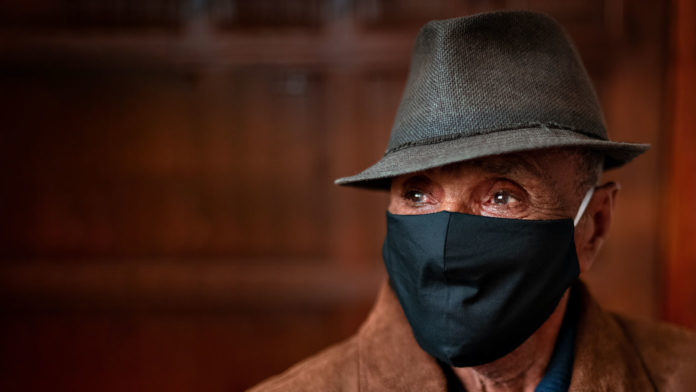After a year of intense global research focus on COVID-19, we’ve come a long way in our understanding of both the SARS-CoV-2 virus and the disease. However, important questions still remain unanswered. Why is COVID-19 more deadly in older people? And why are people with chronic underlying conditions more vulnerable?
The answers may lie in the biology of the proteins involved in infection.
Researchers from McGill University, the University of Calgary, and the University of Saskatchewan set out to learn more by looking at the protein sequences of various coronaviruses, as well as potential host cell receptors across animal species that SARS-CoV-2 can and can’t infect. Their study was published in Computational and Structural Biotechnology Journal.
“We know that the virus can infect humans, cats, dogs and ferrets but not bovine (cattle) and swine (pigs),” said lead author Jaswinder Singh in a press release.
“Also, COVID-19 hits the elderly and people with underlying conditions more severely than the young and healthy ones. Until now reasons for this were unclear.”
The key to viral infection
Proteins are the molecular machinery of all biological systems. They are made up of a backbone of building blocks called amino acids, and they have to fold into a three-dimensional structure to carry out their functions.
Viral infection starts with binding to a specific receptor on the host cell surface. SARS-CoV-2 uses the receptor binding domain of its Spike protein to bind to a protein receptor called ACE2, bringing the virus so close to the cell that their membranes fuse, resulting in infection.
The interaction is like a lock-and-key fit. Differences in either of these proteins that happen across age, chronic conditions, or species could either disrupt or favour viral infection.
Looking at the sequences of the building blocks that make up both proteins, the researchers found that both were rich in cysteine. Cysteine is known for its ability to make connections to other cysteine residues within a protein. These connections are called disulphide bonds, and they can be thought of like bridges that lend structure to the protein.
Amongst these, the researchers found a pair of cysteines in the receptor binding domain of Spike, and another on the ACE2 receptor that could theoretically be redox-active based on their positions. This means they each likely have reversible disulphide bonds that can form or break under different conditions. The team still needs to verify this experimentally.
Bolstering confidence that this may be the case, COVID-19 resistant animals lacked this cysteine pair in their ACE2 sequences, and so a disulphide bond can’t form at that location. Moreover, structural analysis of the SARS-CoV-2 Spike protein demonstrated that its potentially redox-active cysteine pair is located in the loop region that directly participates in ACE2 binding. Having that disulphide bridge intact is likely important for infection.
In other words, if either of these disulphide bonds can be broken, the shapes of Spike and ACE2 would become unstable, and the lock-and-key fit needed for infection may be broken, as well.
The role of aging and illness in COVID-19 severity
In redox-active disulphide bonds, these bridges are held together by an oxidizing cellular environment. Reactive oxygen species that contribute to these environments tend to be in higher concentrations in the elderly and in people with underlying chronic health conditions.
Because intact disulphide bonds in both Spike and ACE2 are important to the infectivity of SARS-CoV-2, this creates the ideal conditions for more cells to become infected.
The reverse is likely true in younger people without underlying conditions, where a reducing or antioxidant environment may decrease the ability of SARS-CoV-2 to bind ACE2 by breaking those disulphide bonds. That could mean milder cases, or greater exposure requirements before an infection sticks.
These molecular clues point to a potential mechanism for why certain people are more likely to develop severe cases of COVID-19 than others. And it also points to potential targets to prevent and treat COVID cases by interfering with host cell binding. More experimental work is needed to verify these relationships, but if they hold, they could form the basis for new treatments.








































